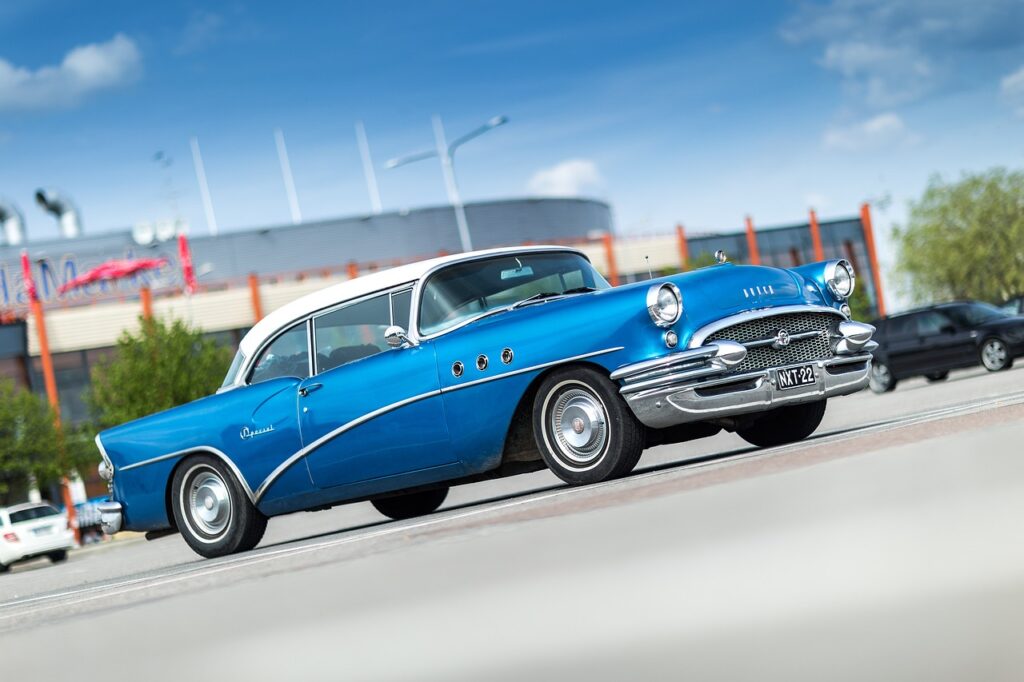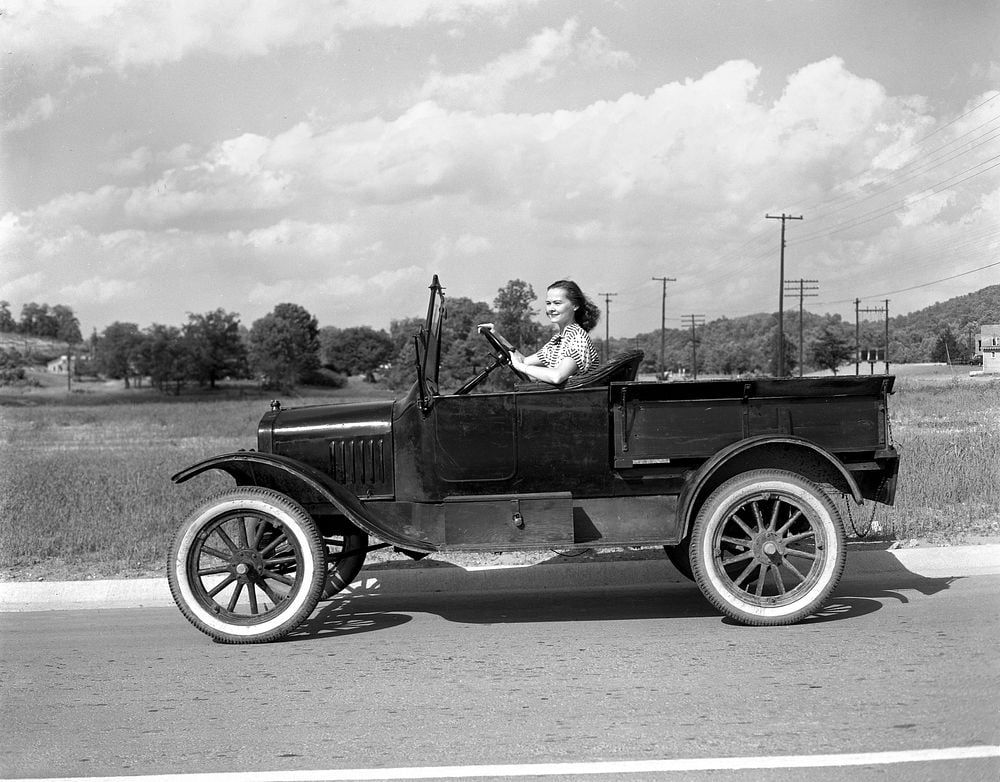
Welcome to the 1960s, a decade that wasn’t just a period on the calendar, but a full-throttle, high-octane revolution in the American auto industry. This was when ordinary manufacturers, fueled by a raging horsepower war, gave birth to some of the most classic and defiant vehicles ever seen. It was the age of the muscle car: enormous V8 engines crammed into mid-sized coupes, engineered solely to dominate in straight lines and deliver a pure, unadulterated rush to anyone behind the wheel. Imagine a trip to the grocery store feeling like a drag strip qualification lap; that was the experience these powerful machines offered.
Before we dive into our list of titans, it’s crucial to understand the unique magic formula that set a muscle car apart from any other large-engined vehicle. It was a perfect confluence of engineering philosophy, the cultural zeitgeist, and sharp market acumen. The concept was ruthlessly simple and incredibly effective: take a common, affordable mid-size two-door car, strip away non-essential luxuries, stiffen its chassis, and then shoehorn in the most potent V8 engine available from the company’s full-size lineup. The goal wasn’t the precise, corner-carving accuracy of a European sports car; it was all about explosive, tire-shredding, straight-line acceleration – pure power delivered to the people.
This incredible decade provided the ideal incubation period for these automotive legends for several compelling reasons. A post-World War II economic boom put more disposable income into the pockets of young Americans, creating a new market hungry for excitement and self-definition. The burgeoning baby boomer generation, coming of age, didn’t want their parents’ sensible sedans; they craved loud, fast, and visually expressive cars that mirrored their rebellious spirit. Organized drag racing emerged, fostering a thriving street-racing culture that manufacturers directly exploited with a “win on Sunday, sell on Monday” marketing strategy, making a car’s quarter-mile time the ultimate statistic. Finally, a relative lack of regulation prior to the 1970s meant engineers enjoyed unimaginable freedom, allowing them to pursue the greatest possible engine capacities and compression ratios without concession, all in the relentless quest for ultimate horsepower. This perfect storm produced automobiles that transcended mere transportation, becoming cultural icons of liberty, strength, and American optimism.
Here they are—the titans of torque, the legends of the quarter-mile. We have lined them up and rated them on a mixture of raw performance, cultural influence, innovative design, and the long-term legacy they created. These vehicles didn’t just drive; they characterized the muscle car era of the ’60s, forging an age of energy and defiance that continues to resonate with enthusiasts today.
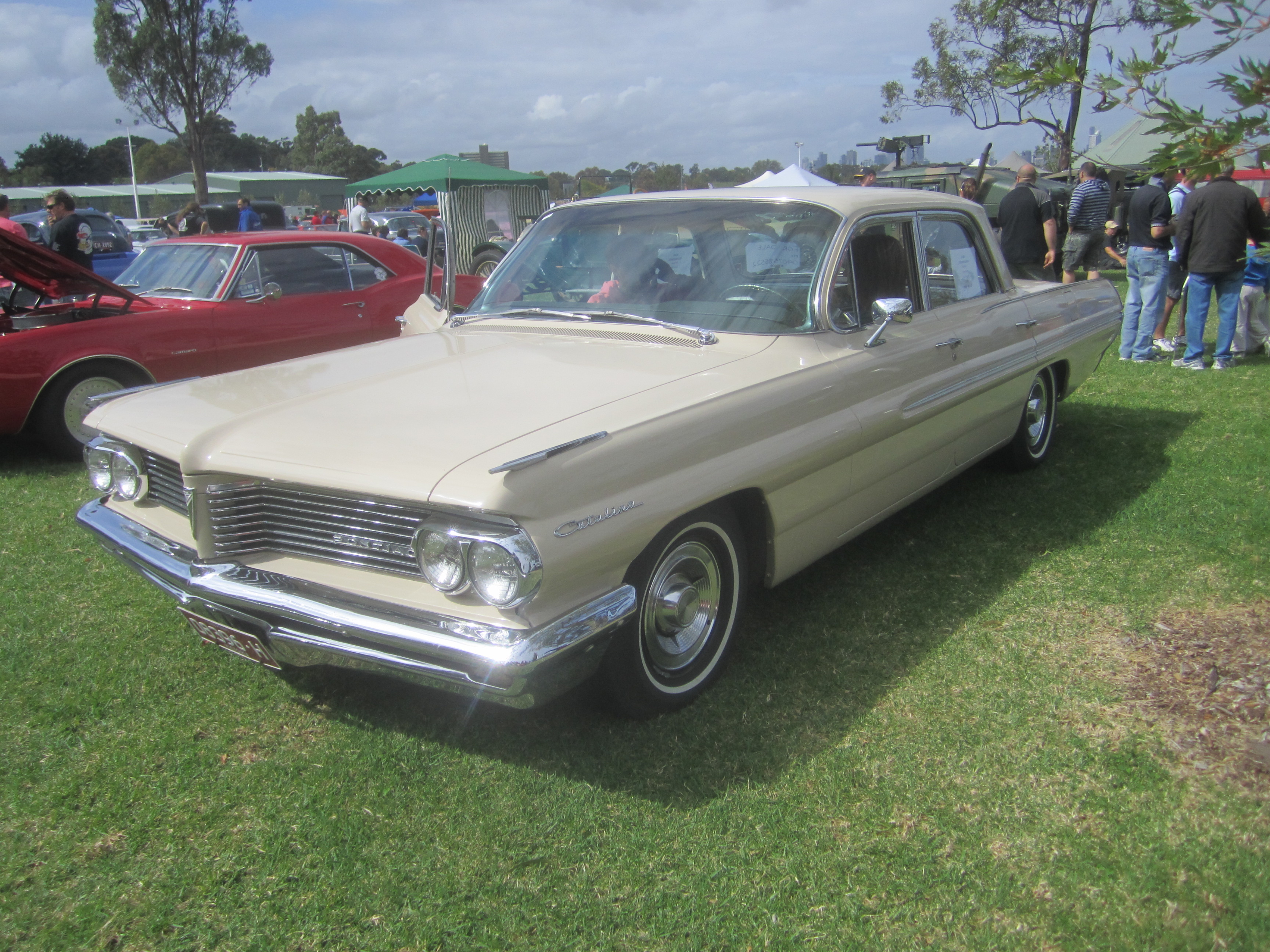
1. **1962 Pontiac Catalina Super Duty**While the term “muscle car” had yet to be coined, the 1962 Pontiac Catalina Super Duty undeniably laid critical groundwork for the revolution that was to come. These full-size cars, along with Ford Galaxies, Chevy Impalas, and Chrysler 300s, were the big-engine precursors tearing up speedways and dragstrips. Pontiac was a dominant force in motorsports during this period, fiercely competing before the AMA’s ban on racing in 1963. However, even before the ban, Pontiac had already begun setting the stage for an automotive paradigm shift with its spectacular series of Super Duty engines.
The heart of these early performance machines was the formidable 421-cubic-inch Super Duty Pontiac engine. Initially rated at an impressive 405 horsepower, these powerplants were engineered for extreme performance. Those built after March of 1962 received further enhancements, including larger valves and a freer-flowing intake manifold, unlocking even more raw power. This relentless pursuit of performance was a clear sign of Pontiac’s intent to push the boundaries of what was possible in a production vehicle.
To amplify the speed of these already potent full-size performers, Pontiac implemented a special weight-loss program for some Catalina and Grand Prix models. This involved replacing standard steel panels with lightweight aluminum body panels and hoods, significantly reducing the car’s overall mass. The result was unequivocally clear: a powerful engine in a lighter car simply translated to more fun and, crucially, more speed. This simple equation would become the fundamental recipe for the muscle car.
Despite their groundbreaking engineering and blistering performance, fewer than 200 Super Duty 421 Pontiacs were ever built, making them exceptionally rare today. Yet, their impact far exceeded their production numbers. These vehicles were a undeniable harbinger for the massive muscle car flood that was on the horizon—a tidal wave of automotive power and excitement that Pontiac itself would soon lead with unparalleled success.
Car Model Information: 1963 Pontiac Catalina Sport Coupe
Caption: 1970 Pontiac Catalina hardtop coupe
Name: Pontiac Catalina
Manufacturer: Pontiac (automobile)
Production: 1950–1981
Platform: GM B platform
Predecessor: Pontiac Chieftain
Successor: Pontiac Bonneville
Class: Full-size car
Layout: FR layout
Categories: 1960s cars, 1970s cars, 1980s cars, All articles needing additional references, All articles with unsourced statements
Summary: The Pontiac Catalina is a full-size automobile produced by Pontiac from 1950 to 1981. Initially, the name was a trim line on hardtop body styles, first appearing in the 1950 Chieftain Eight and DeLuxe Eight lines. In 1959, it became a separate model as the “entry-level” full-size Pontiac.
The Catalina was Pontiac’s most popular model, available in multiple body styles, and served as the donor platform for the popular Pontiac Grand Prix, Pontiac 2+2, Pontiac Ventura, and the Pontiac Safari station wagon.
When the second-generation Pontiac Tempest was introduced in 1964, lessons learned from the Catalina’s introduction of the Grand Prix led to the introduction of the Pontiac GTO, to include the 389 cu in (6.4 L) Pontiac V8.
Get more information about: Pontiac Catalina
Buying a high-performing used car >>>
Brand: Pontiac Model: Catalina
Price: $38,981 Mileage: 38,300 mi.
Read more about: 7 Classic Powerhouses: Why These Vintage Muscle Cars Can Still Outmuscle a New Mustang GT
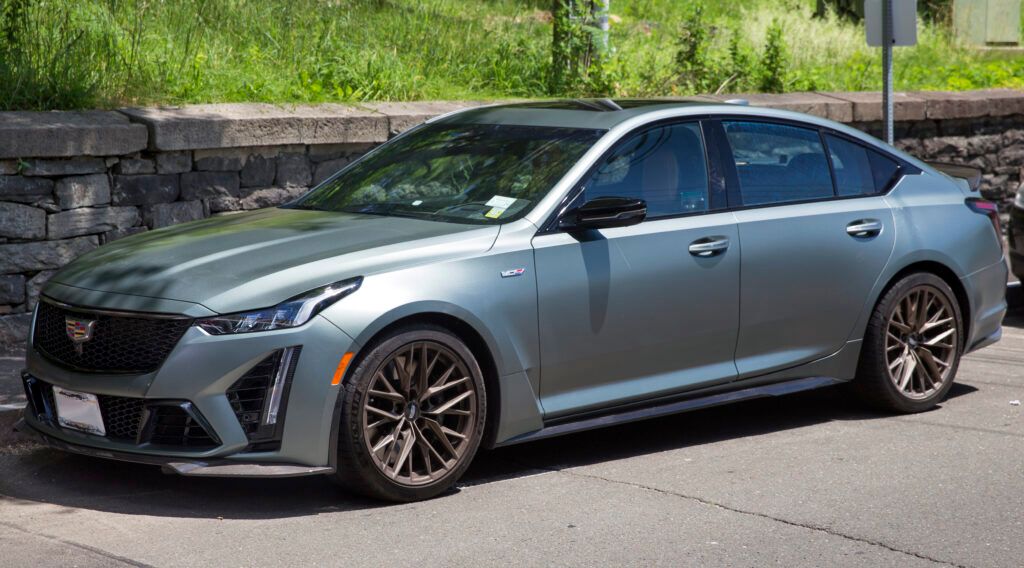
2. **1963 Plymouth Savoy Max Wedge**As General Motors was still largely focused on full-size cars, Chrysler took a different, though initially challenging, path by moving to an intermediate body as early as 1962. This last-minute production change to a smaller platform presented significant design hurdles, as scaled-down versions of Virgil Exner’s larger car designs looked somewhat “cartoonish and out of step” on the more compact platform. However, Chrysler’s engineers and designers, under the new leadership of Elwood Engel, quickly worked to redesign the midsize B-Body range for 1963, with Plymouth notably benefiting from more streamlined and appealing styling.
At the same time, the engineers in Auburn Hills, led by Tom Hoover, were hard at work on what would become the legendary Max Wedge big-block engine. This powerhouse engine was first introduced in 1962 as the Super Stock 413 in Plymouth livery and the Ramcharger 413 in Dodge livery. These formidable vehicles were, by many accounts, the true first ’60s muscle cars, combining a robust engine with a relatively lighter, intermediate chassis, predating Pontiac’s later success.
For the 1963 model year, the Max Wedge engine evolved and grew even more potent, expanding to 426 cubic inches with a factory-rated output of 425 horsepower. When paired with the industry’s groundbreaking three-speed automatic transmission, the TorqueFlite 727, these lightweight 426ci Max Wedge-equipped B-bodies became nearly unbeatable on the dragstrip. Their straight-line performance was legendary, establishing Chrysler as a serious contender in the burgeoning performance market.
The sleek new styling under Elwood Engel had a tangible impact, with sales for B-Body Plymouth intermediates in 1963 increasing by a remarkable 44 percent over 1962. However, these track-dominating machines remained exceptionally rare, with around 250 Max Wedge Plymouths built in 1963, making them highly coveted collectibles today. Max Wedge cars were generally off-limits to the public, designed primarily for racing, yet in an ironic twist, these 1962-1963 Max Wedge cars from Chrysler were the first intermediates with big engines, perfectly encapsulating the muscle car recipe before the term even entered the popular lexicon.
Car Model Information: 2022 Honda Civic Sport
Caption: 1958 Plymouth Savoy 4-door Sedan
Name: Plymouth Savoy
Assembly: unbulleted list
Manufacturer: Plymouth (automobile)
Production: 1954–1964 (1965 in Canada)
Layout: FR layout
Aka: Dodge Kingsway
Class: Full-size car
Categories: 1960s cars, All articles lacking in-text citations, All articles that may contain original research, Articles lacking in-text citations from November 2009, Articles that may contain original research from July 2009
Summary: The Plymouth Savoy is an automobile which was produced in the 1951 through 1964 model years by Plymouth.
As with Plymouth’s Plaza and Belvedere models, the Savoy was named after an upscale hotel, the Savoy Hotel in London.
Get more information about: Plymouth Savoy
Buying a high-performing used car >>>
Brand: Plymouth Model: Savoy Max Wedge
Price: $25,849 Mileage: 16,061 mi.
Read more about: Power, Style, and Legacy: 14 Classic Cars from the ’70s That Live On

3. **1964 Ford Fairlane Thunderbolt**In 1963, the major automotive factories were still largely relying on their full-size cars to achieve victories in NASCAR and on the dragstrip. For Ford, this meant campaigning the imposing Galaxie 500, which, while fast with Ford’s new 427ci big-block FE engine, simply wasn’t fast enough to consistently dominate. What Ford truly needed to decisively enter and win the rapidly escalating ’60s muscle car game was something smaller and significantly lighter, a void that would be spectacularly filled by the formidable 1964 Ford Fairlane Thunderbolt.
The Thunderbolts were ingeniously based on Ford’s new midsize Fairlane platform, which had debuted two years prior in 1962. Powering these street and strip monsters was Ford’s high-output 427ci FE big-block engine, a beast that generated a staggering 425 horsepower at a screaming 6,000 rpm. This potent engine, combined with the Fairlane’s more compact dimensions, created an incredibly effective performance package designed for one purpose: speed.
Ford produced an extremely limited run of just 100 Ford Fairlane Thunderbolts in 1964, which turned out to be the sole year of its production. This exclusive production run included 49 units equipped with four-speed manual transmissions and 51 automatics. Although they were controversially deemed illegal for use in NASCAR, the Thunderbolts made their mark where it counted: they famously went on to win the highly competitive 1964 NHRA Super Stock championship, cementing their legendary status in drag racing history. NASCAR, ironically, would pivot in 1965, banning the Chrysler Hemi and inadvertently handing stock car racing dominance to Ford.
Beyond just offering the powerful 427 FE in a midsize Fairlane, the lightweight intermediate underwent further radical measures to shed every possible pound. This included replacing the standard steel hood, doors, fenders, and bumper with featherlight fiberglass units. Even the side and rear windows were swapped out for lighter plexiglass, showcasing Ford’s uncompromising commitment to creating an ultimate drag machine. Each Thunderbolt was a meticulously crafted, purpose-built contender, a true testament to early muscle car engineering.
Car Model Information: 2022 Honda Civic Sport
Name: Ford Fairlane Thunderbolt
Caption: Ford Fairlane Thunderbolt
Manufacturer: Ford Motor Company
ModelYears: 1964
Class: Muscle car
Assembly: Dearborn, MI
BodyStyle: sedan (automobile)
Layout: FR layout
Related: Mercury Cyclone
Wheelbase: 115.5 in
Abbr: on
Length: 197.5 in
Width: 72.5 in
Transmission: Cruise-O-Matic#MX.2FFX,manual transmission
Engine: {{convert,427,cuin,L,1,abbr=on,Ford FE engine#427
Weight: 3203 lb
Categories: All articles covered by WikiProject Wikify, All articles with bare URLs for citations, Articles covered by WikiProject Wikify from September 2022, Articles needing cleanup from September 2022, Articles with bare URLs for citations from September 2022
Summary: The Ford Fairlane Thunderbolt is a limited production, factory experimental, drag racing version of the Ford Fairlane produced during the 1964 model year only. A total of 100 units were produced; forty-nine 4-speeds and fifty-one automatics. A 4 speed secured the stick CLASS win at the US Nationals and secured the 1964 NHRA Super Stock championship for Ford.
Get more information about: Ford Fairlane Thunderbolt
Buying a high-performing used car >>>
Brand: Ford Model: Fairlane Thunderbolt
Price: $25,849 Mileage: 16,061 mi.
Read more about: Beyond Their Time: 15 Legendary Muscle Cars That Still Command the Road
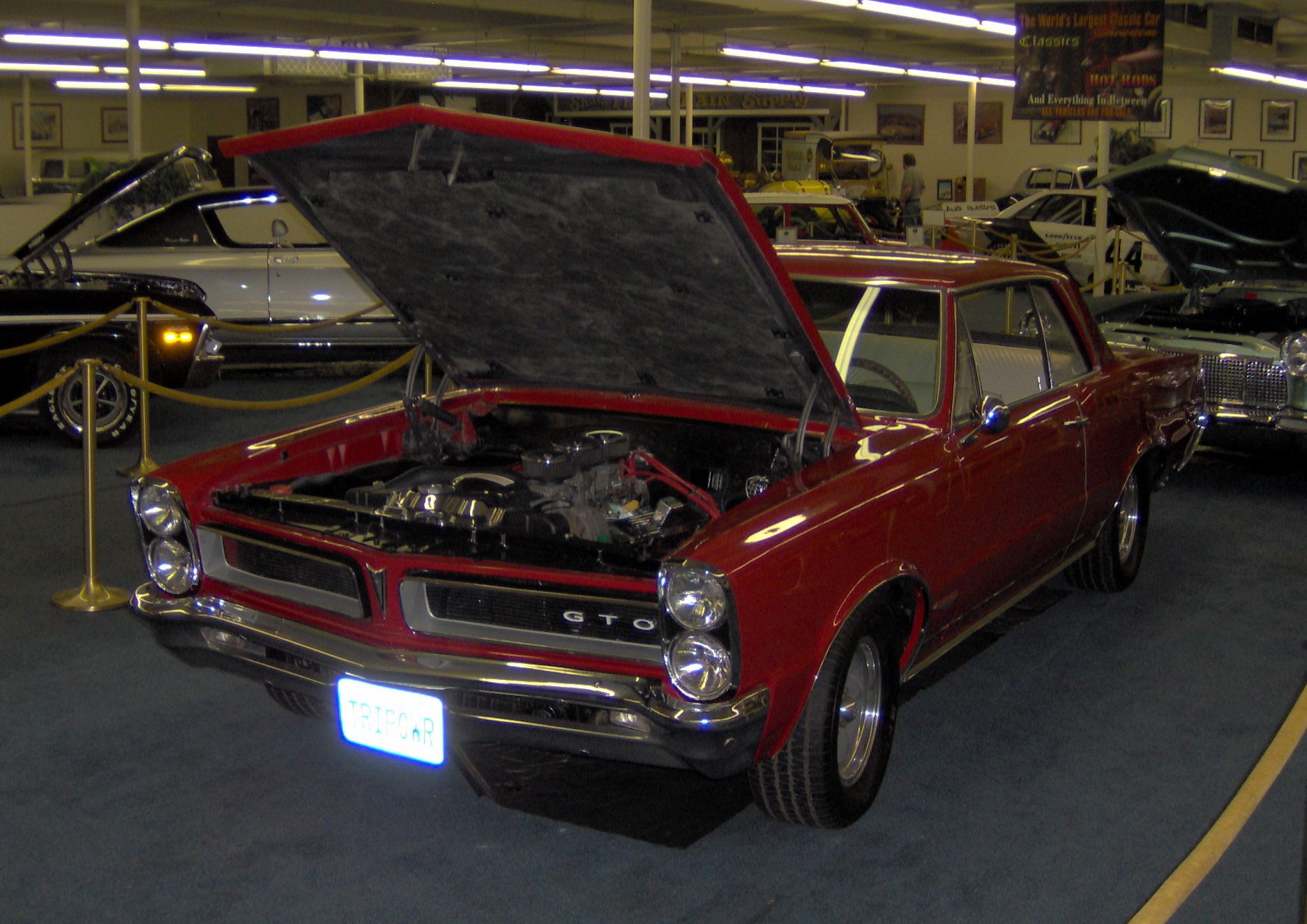
4. **1965 Pontiac GTO Tri-Power**The breakthrough year for ’60s muscle cars undeniably arrived in 1964 with the introduction of Pontiac’s GTO trim level on the midsize LeMans model. This iconic vehicle is often credited as the “Godfather of 1960s muscle cars,” not necessarily because it was the absolute first car with a big engine, but because it was the first to package that concept in the most desirable and marketable way for the burgeoning youth market. Pontiac, under the visionary leadership of John DeLorean, famously flaunted a General Motors corporate order prohibiting large engines in intermediate vehicles, daringly introducing a hugely powerful 389 cubic inch V8 as an option package with the LeMans.
This bold decision to exceed GM’s corporate engine displacement limit of 330 cubic inches for midsize models was a significant gamble and could have easily gone awry. However, the GTO’s unmitigated sales success and a subsequent internal GM ruling that sided with Pontiac proved its controversial approach correct. While MotorTrend would later praise the 1968 Pontiac GTO, particularly its innovative Endura bumper, enough to name it Car of the Year, hot-rodders and enthusiasts have historically gravitated more towards the Pontiac GTO’s fabled tri-power carburetion setup, which reached its performance zenith in the 1965 model year.
The year 1965 represented a period of crucial refinement for the Pontiac GTO, building upon its initial success. The model received significant upgrades, including better brakes, heavy-duty shocks for improved handling, and a stronger anti-sway bar to enhance its dynamic capabilities. Power outputs were also boosted, with the base-version engine gaining more horsepower, increasing to 335 hp. More significantly, the horsepower rating for the revered 389ci tri-power option was raised to an even more impressive 360 hp, delivering exhilarating performance.
These enhancements, combined with its irresistible appeal to the baby boomer generation, led to an explosive surge in popularity. Sales of the redesigned 1965 GTO more than doubled, soaring to an incredible 75,342 units. The tri-power carburetion setup, a hallmark of the early GTO’s raw power and performance, remained a defining feature until it was phased out of production by 1967, marking the end of an iconic era for Pontiac’s legendary muscle car.
Car Model Information: 1966 Pontiac GTO Coupe
Name: Pontiac GTO
Caption: 2005 Pontiac GTO
Manufacturer: Pontiac (automobile),Holden
Class: Mid-size car,Compact car,Mid-size car
Production: 1963–1974,2003–2006
Predecessor: Pontiac Tempest
Layout: Front-engine, rear-wheel-drive layout
ModelYears: 1964-1974 2004-2006
Categories: 1970s cars, 2000s cars, All articles with unsourced statements, Articles with short description, Articles with unsourced statements from October 2008
Summary: The Pontiac GTO is a front-engine, rear-drive, two-door, and four-passenger automobile manufactured and marketed by the Pontiac division of General Motors over four generations from 1963 until 1974 in the United States — with a fifth generation made by GM’s Australian subsidiary, Holden, for the 2004 through 2006 model years.
The first generation of the GTO is credited with popularizing the muscle car market segment in the 1960s. Some consider the Pontiac GTO to have started the trend with all four domestic automakers offering a variety of competing models.
For the 1964 and 1965 model years, the GTO was an optional package on the intermediate-sized Pontiac LeMans. The 1964 GTO vehicle identification number (VIN) started with 22, while the 1965 GTO VIN began with 237. The GTO was designated as a separate Pontiac model from 1966 through 1971 (VIN 242…). It became an optional package again for the 1972 and 1973 intermediate LeMans. For 1974, the GTO was an optional trim package on the compact-sized Ventura.
The GTO model was revived for the 2004 through 2006 model years as a captive import for Pontiac, a left-hand drive version of the Holden Monaro, itself a coupé variant of the Holden Commodore.
Get more information about: Pontiac GTO
Buying a high-performing used car >>>
Brand: Pontiac Model: GTO
Price: $59,991 Mileage: 4,408 mi.
Read more about: The Apex of Automotive Heritage: 15 Classic Cars That Command State-by-State Allegiance Across America

5. **1966 Dodge Coronet Street Hemi**By 1966, Chrysler made a resolute decision to escalate its commitment to street performance, introducing a game-changing move that brought race-bred power to the public. This pivotal year saw the previously race-only 426ci Hemi engine, a powerhouse known for its track dominance, become available to any off-the-street customer who had the means to purchase it. This decision democratized high-performance, allowing enthusiasts to experience true racing heritage in a road-legal package.
The impetus for homologating the Hemi for street use stemmed directly from NASCAR’s firm stance. After the race Hemi had achieved a clean sweep in 1964, most notably with Richard Petty driving a Hemi-powered Plymouth to victory, NASCAR banned the engine from competition during the 1965 season. The racing organization made its position unequivocally clear: “If you don’t make it for the public, you can’t race it here.” This ultimatum forced Chrysler’s hand, leading to the Hemi’s reintroduction as a street-legal option.
Following NASCAR’s directive, the legendary 425-horsepower Hemi engine found its way under the hoods of both Dodge and Plymouth models, specifically in the formidable 1966 Dodge Coronet and its Plymouth counterparts. This strategic move not only satisfied NASCAR’s homologation requirements but also unleashed an unprecedented level of factory-sanctioned street performance onto American roads. It marked a new chapter where race-winning technology became accessible to the everyday driver, albeit a highly enthusiastic and well-funded one.
The availability of the Street Hemi in the 1966 Coronet immediately established it as one of the most fearsome and respected muscle cars of its time. Offering unparalleled power and a direct link to the brand’s racing triumphs, the Coronet Street Hemi solidified Chrysler’s reputation for engineering raw, unadulterated performance. It became an instant icon, a roaring testament to the era’s horsepower obsession, and a definitive example of what made 1960s muscle cars so incredibly special and memorable.
Car Model Information: 1967 Dodge Coronet Restomod
Name: Dodge Coronet
Caption: 1967 Dodge Coronet R/T
Manufacturer: Dodge
Production: 1949–1959,1965–1976
Class: Full-size
Predecessor: Dodge Custom
Successor: Dodge Dart
Layout: FR layout
Categories: 1950s cars, 1970s cars, All articles with dead external links, All articles with unsourced statements, Articles with dead external links from June 2016
Summary: The Dodge Coronet is an automobile that was marketed by Dodge in seven generations, and shared nameplates with the same bodyshell with varying levels of equipment installed. Introduced as a full-size car in 1949, it was the division’s highest trim line and moved to the lowest level starting in 1955 through 1959. The name was reintroduced on intermediate-sized models from the 1965 until 1976 model years. Muscle car versions were available starting in 1965 with the 383 and 426 wedge cu in (7.0 L) Chrysler RB engine, followed in 1966 by the powerful 426 cu in (7.0 L) Chrysler Hemi. Other performance models included the “Superbee”, and featured, the 383 cu in (6.3 L) Magnum, among other engine options. The nameplate “coronet” is a type of crown worn by royalty.
In the 1980s, the Coronet was used on Dodge models marketed in Colombia.
Get more information about: Dodge Coronet
Buying a high-performing used car >>>
Brand: Dodge Model: Coronet
Price: $46,500 Mileage: 2,818 mi.
Read more about: Unleash the Beasts: The Most Popular Classic Muscle Cars That Defined the ’60s and ’70s Golden Era
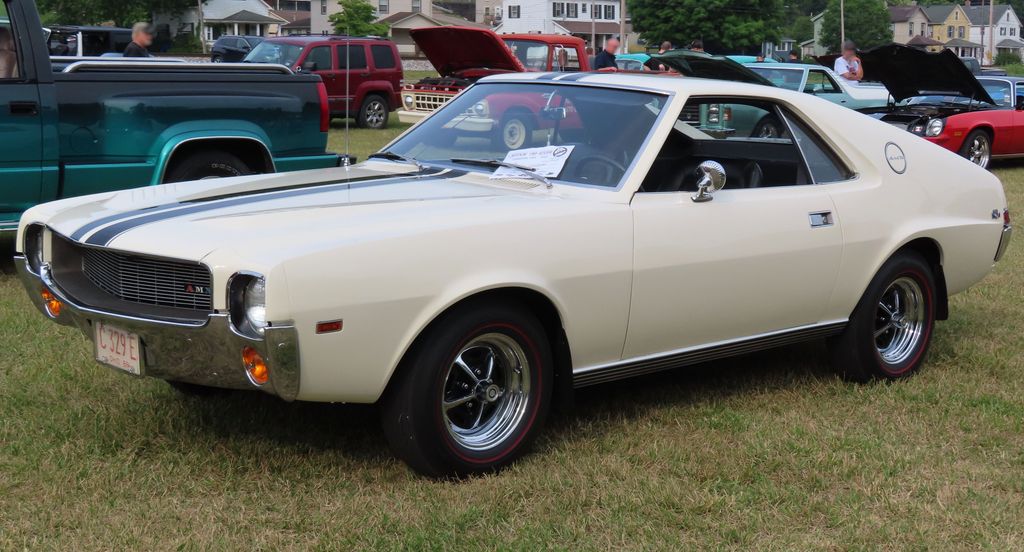
6. **1968 AMC AMX**American Motors, initially focused on utilitarian family transportation, was a latecomer to the high-stakes muscle car arena. Their strategy focused on “the car for the human race,” while larger competitors battled for the youth performance market. Ironically, AMC’s earlier revolution with smaller cars had laid groundwork for the muscle car movement, a path they initially hesitated to fully embrace.
By 1968, AMC’s need to catch up was undeniable. Their solution arrived with the sleek Javelin and the audacious AMX. The AMX was groundbreaking, positioned as a compact two-seat sports car targeting both Ford’s Mustang and Chevy’s Corvette. Crucially, it hit a price point closer to the accessible Mustang, yet offered an exotic two-seater experience often compared to the more expensive Corvette.
Under its hood, the 1968 AMX offered a formidable 390 cubic-inch engine, factory-rated at 315 horsepower. Coupled with the AMX’s remarkably light 3,000-pound curb weight, the result was vertiginous acceleration. This combination delivered exhilarating performance at a bargain-basement price, allowing more enthusiasts to experience genuine high-octane thrills without breaking the bank.
The AMX’s success extended beyond raw speed; it cleverly allowed American Motors to continue its high-value strategy, which previously made the Rambler American a success. This time, the strategy was ingeniously tailored to the burgeoning baby-boomer demographic, offering performance and excitement aligned with their rebellious spirit. The AMX carved out a unique and memorable niche in muscle car history.
Read more about: Unearthing the Power: 14 Underrated Small-Block V8 Muscle Cars That Deliver Classic Style and Serious Punch on a Budget
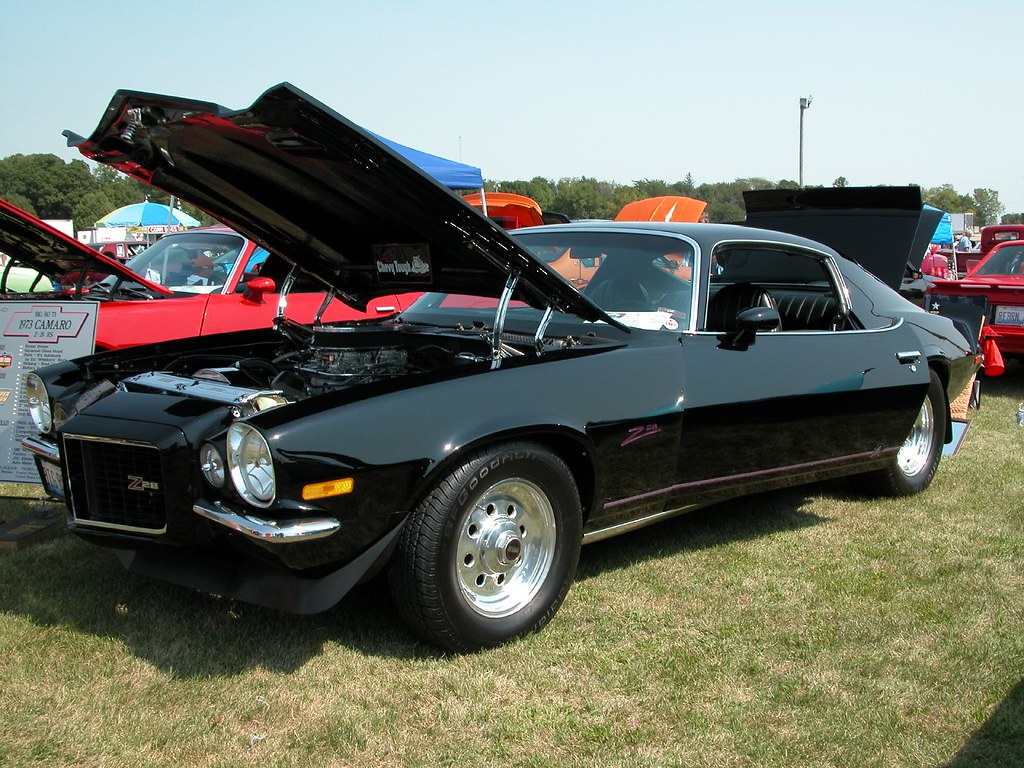
7. **1969 Chevy COPO 427ci Camaro**It’s impossible to chronicle ’60s muscle titans without revering the Chevrolet Camaro, especially the 1969 COPO (Central Office Production Order) models. While COPOs typically equipped non-performance vehicles with specialized gear, a few sharp dealerships realized a loophole. Visionary dealers like Fred Gibb, Don Yenko, and Berger used the COPO system to “back-door” Chevy’s mighty 427 cubic-inch V8 into its lightest car, the Camaro. The result was a factory-built supercar, a street-legal beast never officially advertised, creating a mythical aura.
The “COPO” designation here explicitly meant the 427 cubic-inch big-block Chevy V-8, an engine normally restricted to Corvettes and full-size Chevys. This internal restriction was pertinent for 1969, as corporate policy prohibited engines exceeding 400 cubic inches in the compact Camaro. This made the COPO a truly defiant act of engineering and marketing. These were rolling legends, testaments to brute force and exclusivity.
Commentators often cite the 1969 COPO Camaro with the 427ci big-block as the zenith of Chevy performance in the 1960s. There were two distinct COPO 427 Camaros that year: the COPO 9561 with the solid-lifter L72 iron-block 427 (estimated 1,015 units), and the even rarer COPO 9560, powered by the exotic aluminum ZL1 427ci big-block, with a mere 69 examples built.
Adding to the legend, for ultimate street-racing theatrics, the V75-code “liquid tire chain” option was available in 1969. This thinly-disguised, remote-controlled burnout-juice dispenser sprayed a traction-aid chemical onto the rear tires for dramatic launches. Records indicate at least one audacious system found its way onto a COPO Camaro, further cementing these cars’ reputation for uncompromising, over-the-top performance.
Car Model Information: 1968 Chevrolet Camaro
Name: Chevrolet Camaro
Manufacturer: Chevrolet
Production: 1966–2002,2009–2023
ModelYears: 1967–2002,2010–2024
Class: Pony car
BodyStyle: coupe,convertible
Platform: GM F platform,GM Zeta platform,GM Alpha platform
Layout: Front-engine, rear-wheel-drive layout
Categories: 1970s cars, 1980s cars, 1990s cars, 2+2 coupés, 2000s cars
Summary: The Chevrolet Camaro is a mid-size American automobile manufactured by Chevrolet, classified as a pony car. It first went on sale on September 29, 1966, for the 1967 model year and was designed to compete with the Ford Mustang. The Camaro shared its platform and major components with the Firebird, produced by General Motors’ Pontiac division that was also introduced for the 1967 model year.
Four distinct generations of the Camaro were developed before production ended in 2002. The nameplate was revived on a concept car that evolved into the fifth-generation Camaro; production started on March 16, 2009.
Production of the sixth generation of the Camaro ended in December 2023, for the 2024 model year.
Get more information about: Chevrolet Camaro
Buying a high-performing used car >>>
Brand: Chevrolet Model: Camaro
Price: $79,980 Mileage: 1,713 mi.
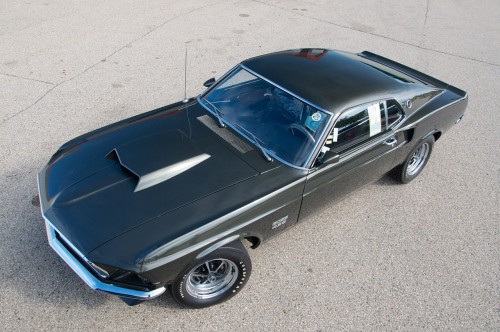
8. **1969 Ford Boss 429 Mustang**While a friendly debate persists whether pony cars like the Mustang fit the ’60s muscle definition, the sheer potency of the 1969 Boss 429 Mustang is undeniable. This wasn’t just a powerful Mustang; it was the most potent of its breed, born not primarily for street dominance, but for a specific, high-stakes purpose: a backdoor ticket to victory in NASCAR.
The Boss 429’s primary role was NASCAR homologation. To qualify its formidable Hemi engine for competition, Ford needed to offer it in a production vehicle. While the Mustang was the platform for street legality, the racing Hemi typically competed in the midsize Torino. Ironically, the Cobra Jet 428 Mustang was often quicker than the detuned-for-street Boss 429. However, the 429, with its race-bred DNA, merely needed the right gearing, exhaust, and tune-up to unleash its rival-devouring potential.
When the Boss 429 Mustang received production approval in March 1969, its destiny as a rarity was sealed. Production numbers reflect this exclusivity: only 859 Boss 429 Mustangs built in 1969, followed by a scarcer 499 examples in 1970. Though factory-rated at a “sleepy” 375 horsepower, it was widely known that with minimal effort, these engines delivered significantly more. In 1970, the hydraulic cam was replaced by a mechanical tappet for enhanced performance.
A significant engineering challenge arose from the engine’s sheer size. The standard Mustang engine bay was too narrow for the massive Hemi powerplant. To overcome this, cars were sent to Kar Kraft of Brighton, Michigan, for painstaking chassis modification. Only then could the mighty 429 Hemi engines and special performance equipment be meticulously installed. This bespoke process underscores the Boss 429’s status as a truly exceptional, purpose-built piece of American automotive history.
Car Model Information: 1966 Ford Mustang Base
Name: Ford Mustang
Caption: 2024 Ford Mustang GT Convertible
Aka: Ford T5 (Germany)
Manufacturer: Ford Motor Company
Production: March 1964 – present
ModelYears: 1965–present
Class: Unbulleted list
BodyStyle: Unbulleted list
Layout: Front-engine, rear-wheel-drive layout
Categories: 1970s cars, 1980s cars, 1990s cars, 2+2 coupés, 2000s cars
Summary: The Ford Mustang is an American automobile manufactured and marketed by Ford since 1964, as Ford’s longest nameplate in continuous production. Currently in its seventh generation, it is the fifth-best selling Ford car nameplate. The namesake of the “pony car” automobile segment, the Mustang was developed as a highly styled line of sporty coupes and convertibles derived from existing model lines, initially distinguished by its pronounced “long hood, short deck” proportions.
Originally predicted to sell 100,000 vehicles yearly, the 1965 Mustang became the most successful vehicle launch since the 1927 Model A. Introduced on April 17, 1964 (16 days after the Plymouth Barracuda), over 400,000 units were sold in its first year; the one-millionth Mustang was sold within two years of its launch. In August 2018, Ford produced the 10-millionth Mustang; matching the first 1965 Mustang, the vehicle was a 2019 Wimbledon White convertible with a V8 engine.
The success of the Mustang launch led to multiple competitors from other American manufacturers, including the Chevrolet Camaro and Pontiac Firebird (1967), AMC Javelin (1968), and Dodge Challenger (1970). It also competed with the Plymouth Barracuda, which was launched around the same time. The Mustang also had an effect on designs of coupes worldwide, leading to the marketing of the Toyota Celica and Ford Capri in the United States (the latter, by Lincoln-Mercury). The Mercury Cougar was launched in 1967 as a unique-bodied higher-trim alternative to the Mustang; during the 1970s, it included more features and was marketed as a personal luxury car.
From 1965 until 2004, the Mustang shared chassis commonality with other Ford model lines, staying rear-wheel-drive throughout its production. From 1965 to 1973, the Mustang was derived from the 1960 Ford Falcon compact. From 1974 until 1978, the Mustang (denoted Mustang II) was a longer-wheelbase version of the Ford Pinto. From 1979 until 2004, the Mustang shared its Fox platform chassis with 14 other Ford vehicles (becoming the final one to use the Fox architecture). Since 2005, Ford has produced two generations of the Mustang, each using a distinct platform unique to the model line.
Through its production, multiple nameplates have been associated with the Ford Mustang series, including GT, Mach 1, Boss 302/429, Cobra (separate from Shelby Cobra), and Bullitt, along with “5.0” fender badging (denoting 4.9 L OHV or 5.0 L DOHC V8 engines).
Get more information about: Ford Mustang
Buying a high-performing used car >>>
Brand: Ford Model: Mustang
Price: $32,991 Mileage: 98,811 mi.
Read more about: John Wick’s 1969 Mustang: How a Classic Car Became a Cinematic Icon
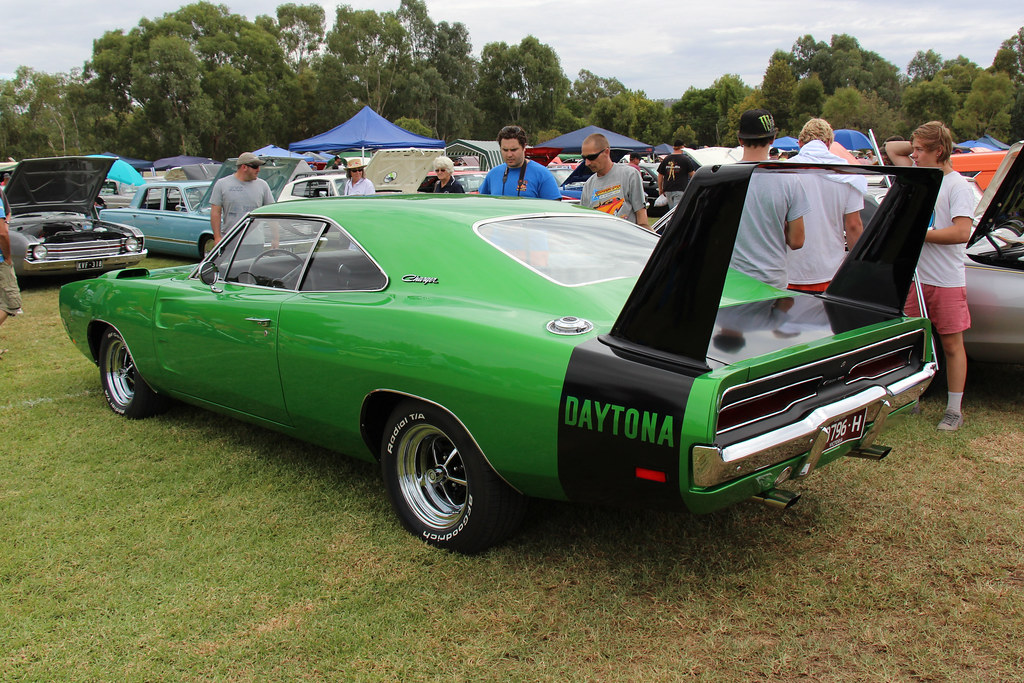
9. **1969 Dodge Hemi Daytona**As the 1960s closed, a perfect confluence of societal and technological factors propelled Detroit’s horsepower battle to an unprecedented crescendo. Baby-boomers, mature and affluent, had an insatiable appetite for speed. The Space Race inspired bold designs, fuel remained cheap, and racing captivated public attention like never before. This set the stage for automotive extremism.
Against this, Dodge, with characteristic audacity, hatched an outrageous plan to utterly dominate NASCAR. This materialized as the iconic 1969 Dodge Charger Daytona. By building and selling 503 specially equipped Chargers to the public, Dodge met NASCAR’s homologation rules, securing one of the most recognized and visually striking ’60s muscle cars. It was a memorable machine on American roads and racetracks.
The public had never witnessed such a spectacle. The Daytona’s revolutionary design featured a sleek, elongated nosecone, meticulously shaped in a wind tunnel for aerodynamic efficiency. It paired with a towering, almost fantastical rear wing, looking more at home on a supersonic jet fighter. This radical styling was pure function, engineered for stability and downforce at blistering speeds, giving Dodge a distinct advantage.
Moreover, the new Dodge Daytona was available with Chrysler’s legendary, seemingly invincible 426 cubic-inch Hemi engine – that notorious “thorn in NASCAR’s side” now reintroduced. By integrating this proven powerhouse with such an extreme aerodynamic package, Dodge called NASCAR’s bluff. It asserted dominance not just on the track, but by bringing race-winning technology directly to enthusiasts. In doing so, the Hemi Daytona etched its dramatic profile into automotive history.
Car Model Information: 2022 Honda Civic Sport
Name: Dodge Charger Daytona
Caption: 1969 Dodge Charger Daytona
Manufacturer: Dodge
Production: 1969–1970,2006–2009,2013,2017–2023
Class: Muscle car
Layout: FR layout
Categories: 1960s cars, 1970s cars, 2000s cars, All articles needing additional references, All articles with unsourced statements
Summary: Dodge produced three separate models with the name Dodge Charger Daytona, all of which were modified Dodge Chargers. The name was taken from Daytona Beach, Florida, which was an early center for auto racing and still hosts the Daytona 500, NASCAR’s premier event. The original Dodge Charger Daytona was designed to beat the competition in NASCAR racing. It was the first NASCAR vehicle to reach 200 miles per hour, which was a major milestone at the time.
The first use of the ‘Daytona’ name for a car was on a version of the Studebaker Lark. The Daytona was the performance model of the compact Lark, and it was produced during the 1960s.
Get more information about: Dodge Charger Daytona
Buying a high-performing used car >>>
Brand: Dodge Model: Hemi Daytona
Price: $25,849 Mileage: 16,061 mi.
Read more about: Unleash the Beasts: The Most Popular Classic Muscle Cars That Defined the ’60s and ’70s Golden Era
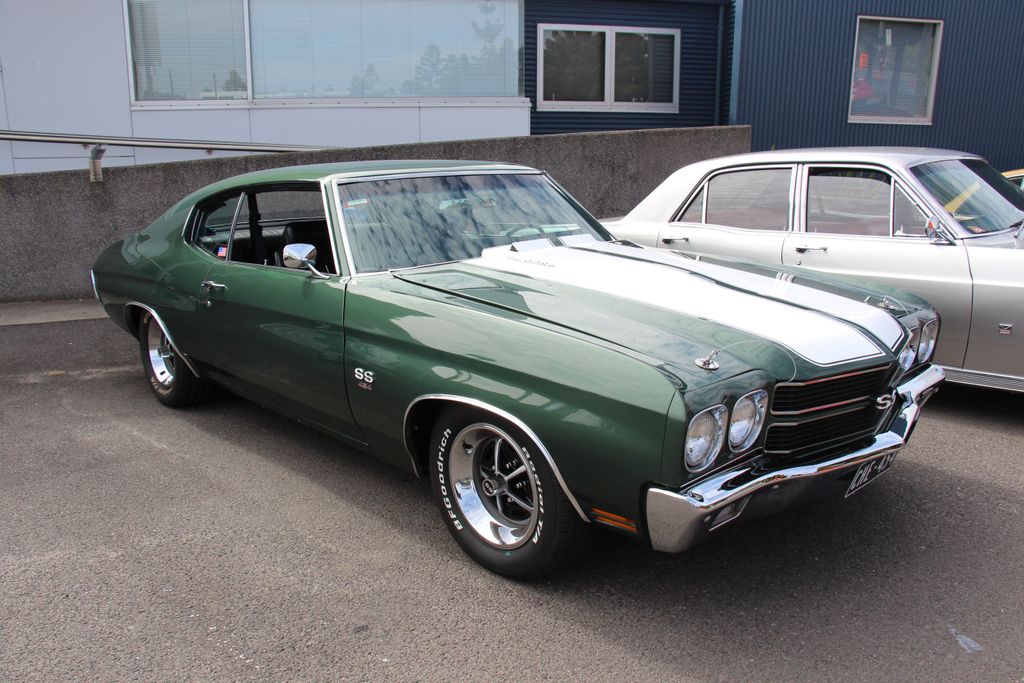
10. **1970 Chevelle SS454**The General Motors midsize A-body platform, particularly the Chevrolet Malibu, deserves immense credit for cultivating and expanding the ’60s muscle car phenomenon. Within this versatile lineage, the Chevelle SS, in its ultimate iteration, ascended to the pinnacle of muscle car popularity for decades. It solidified its reputation as a fearsomely potent machine, blending everyday usability with raw power, closing out the decade memorably.
For the 1970 model year, a seismic event occurred for Chevelle enthusiasts: the legendary 454 cubic-inch big-block Chevy engine became officially available on the Chevelle. This monumental powerplant was offered as part of the RPO Z15 equipment option group, essentially the “magic handshake” needed to special-order the magnificent 1970 Chevelle SS454. This move instantly propelled the Chevelle into an even higher echelon of performance, signifying an incredible peak in the horsepower wars.
The 454 cubic-inch big-block came in two thrilling flavors. There was the robust 360-horsepower LS5 for the street. But the true beast was the solid-lifter, cowl-inducted, 11:1-compression, 450-horsepower LS6. The LS6 boasted the most horsepower ever offered in a production car at that time, a staggering figure that cemented its legendary status. Only 4,475 LS6-powered SS454 Chevelles were produced in 1970, making these specific variants incredibly rare and sought-after.
However, a complication arose in Chevelle provenance for later models. After 1968, the Chevelle Super Sport was demoted from a distinct car model to merely a trim line of the Malibu. Previously, a specific VIN identifier verified genuine Super Sport models. From 1969 onward, establishing authentic provenance required meticulous sleuthing of dealership paperwork and other indirect means. This characteristic makes later Chevelle SS examples, despite their production numbers, even rarer and considerably more expensive to verify for serious collectors.
Car Model Information: 2022 Honda Civic Sport
Aka: Ford Fairlane (Venezuela)
Name: Ford Torino
Caption: 1970 Ford Torino Cobra SportsRoof
Manufacturer: Ford Motor Company
Production: 1968–1976
Class: Mid-size car,muscle car
Layout: FR layout
Related: Mercury Montego
Assembly: ubl
Predecessor: Ford Fairlane (Americas)
Successor: Ford LTD II
Categories: 1960s cars, 1970s cars, All Wikipedia articles written in American English, All articles with vague or ambiguous time, Articles with short description
Summary: The Ford Torino is an automobile that was produced by Ford for the North American market between 1968 and 1976. It was a competitor in the intermediate market segment and essentially a twin to the Mercury Montego line.
Just as the Ford LTD had been the upscale version of the Ford Galaxie, the Torino was initially an upscale variation of the intermediate-sized Ford Fairlane. In the 1968 and 1969 model years, the intermediate Ford line consisted of lower-trim Fairlanes and its subseries, the upper-trim Torino models. In 1970, Torino became the primary name for Ford’s intermediate, and the Fairlane was now a subseries of the Torino. In 1971, the Fairlane name was dropped altogether, and all Ford intermediates were called Torino.
Most Torinos were conventional cars, and generally the most popular models were the four-door sedans and two-door hardtops. However, Ford produced some high-performance “muscle car” versions of the Torino by fitting them with large powerful engines, such as the 428 cu in (7.0 L) and 429 cu in (7.0 L) “Cobra-Jet” engines. Ford also chose the Torino as the base for its NASCAR entrants, and it has a successful racing heritage.
Get more information about: Ford Torino
Buying a high-performing used car >>>
Brand: Chevrolet Model: Chevelle SS454
Price: $25,849 Mileage: 16,061 mi.
Read more about: Commanding Attention: 13 Most Expensive 1970s Cars That Are Worth a Fortune Today for Enthusiasts and Collectors
And there you have it – the definitive journey through the golden era of ’60s muscle cars, from the pioneering spirit of early intermediates to the no-holds-barred apex predators that closed out the decade. These machines were about a visceral experience, an unadulterated rush of power, and a bold statement of American ingenuity. Each one, a symphony of roaring V8s and tire-shredding torque, carved its own indelible mark into automotive history, shaping car culture forever. Even today, these magnificent metal beasts continue to command respect and awe, testaments to an era when horsepower reigned supreme and the open road was an invitation to pure, unadulterated automotive exhilaration. Their legacy burns as brightly as their legendary performance, continuing to inspire generations of car enthusiasts.

